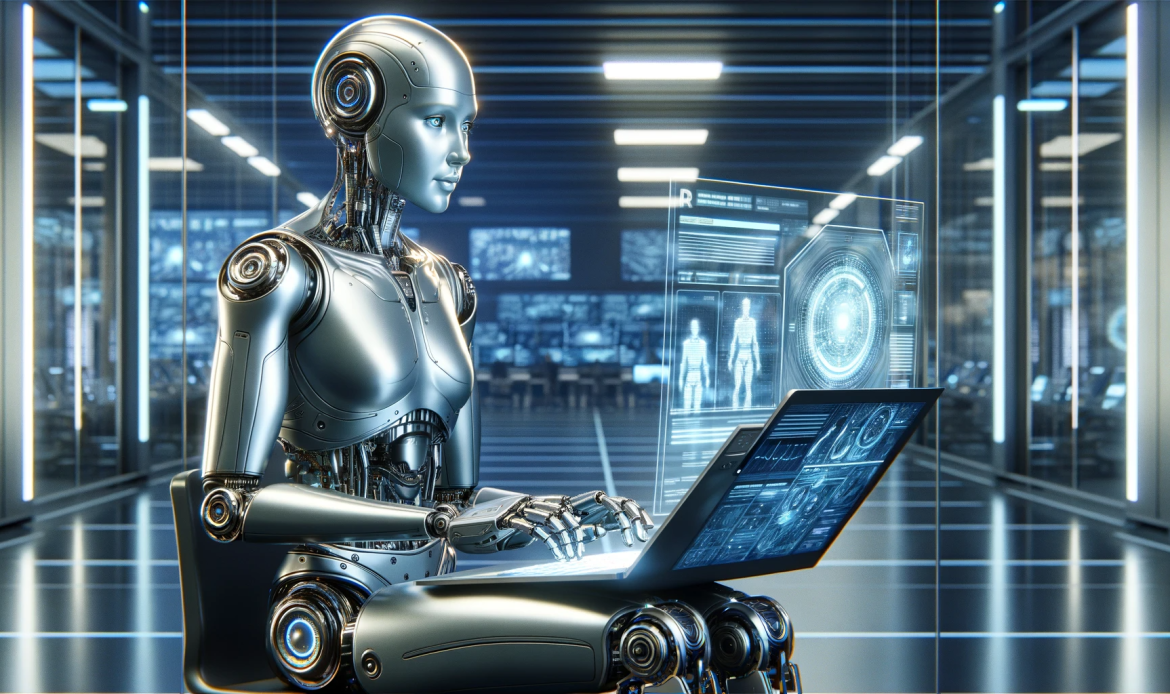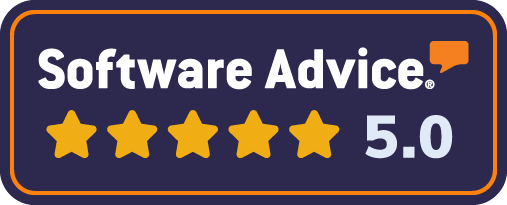At Emplibot, we’ve seen how missed deadlines can derail projects and stress out teams. That’s why we’re excited about the game-changing potential of AI scheduling.
This innovative technology is revolutionizing time management, making it easier than ever to stay on top of tasks and commitments. In this post, we’ll explore how AI scheduling can transform your workflow and help you never miss a deadline again.
Contents
ToggleHow AI Transforms Scheduling
AI scheduling revolutionizes time management and task organization. This innovative technology uses machine learning algorithms to analyze patterns, predict optimal scheduling times, and automate the process of organizing your day.
Smarter Time Management
AI-powered scheduling tools surpass simple calendar apps. They learn from your habits, preferences, and past behaviors to make intelligent decisions about when and how to schedule tasks. For example, if you perform best in the mornings, an AI scheduler might automatically block off your prime hours for deep work tasks.

A study by McKinsey & Company reveals that professionals who use AI-powered scheduling tools experience productivity gains. This boost stems from the AI’s ability to optimize your day, reduce time spent on low-value activities, and ensure high-priority tasks receive the attention they need.
Key Features of AI Schedulers
AI scheduling tools offer features designed to streamline your workflow. One standout feature is automatic task prioritization. The AI analyzes your to-do list, deadlines, and project importance to suggest the most critical tasks for each day.
Another powerful feature is intelligent meeting scheduling. AI schedulers coordinate with multiple participants across different time zones, finding the perfect slot that works for everyone without the need for back-and-forth emails.
AI vs. Traditional Scheduling
The main difference between AI and traditional scheduling methods lies in adaptability and personalization. Traditional methods rely on static rules and manual input, while AI scheduling continuously learns and adjusts.
For instance, if a meeting gets canceled, an AI scheduler automatically fills that time slot with a high-priority task from your to-do list. It also factors in your energy levels, suggesting breaks when you’re likely to be less productive.
Personalized Scheduling Experience
AI schedulers create a tailored experience for each user. They learn your work patterns, preferences, and even your typical commute times to create a schedule that fits your lifestyle. This personalization extends to team scheduling as well, with AI tools able to balance workloads and assign tasks based on individual strengths and availability.
Real-time Adaptability
One of the most powerful aspects of AI scheduling is its ability to adapt in real-time. As your day unfolds, the AI continuously reassesses and adjusts your schedule. If a task takes longer than expected or a new high-priority item comes in, the AI reschedules your day to accommodate these changes. This flexibility ensures that you always work on the most important tasks, even as priorities shift.
The transformative power of AI in scheduling opens up new possibilities for productivity and time management. As we move forward, let’s explore the specific benefits that AI scheduling brings to both businesses and individuals.
How AI Scheduling Boosts Your Business
AI scheduling isn’t just a fancy tech trend-it’s a game-changer for businesses and individuals alike. This technology transforms productivity and work-life balance in remarkable ways.
Supercharging Productivity
AI scheduling tools are productivity powerhouses. Project managers can stand out and position themselves for career success by building their AI skills. This boost comes from AI’s ability to optimize task allocation, reduce time spent on administrative work, and keep projects on track.
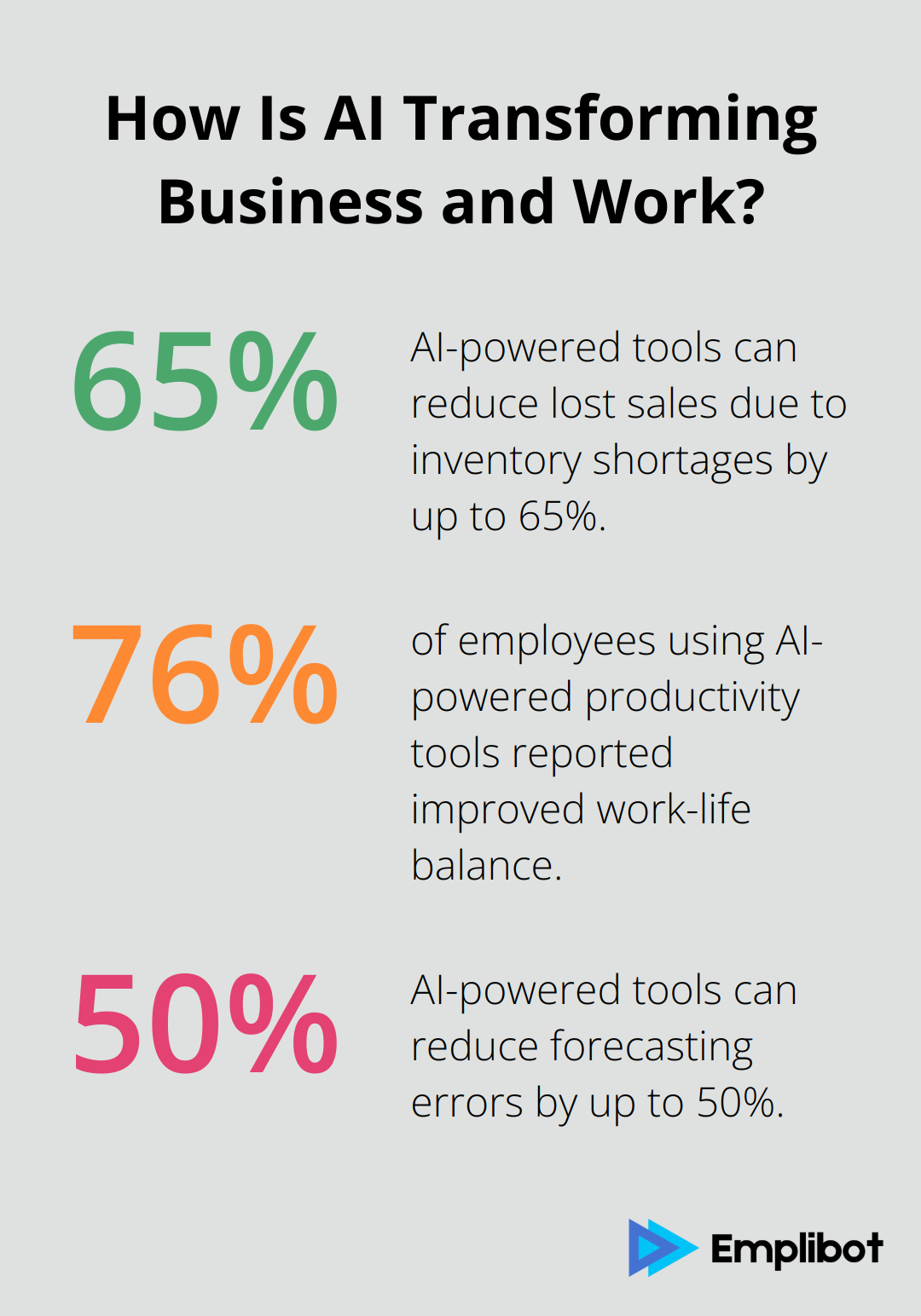
AI schedulers automatically prioritize tasks based on deadlines, importance, and team capacity. This ensures that high-value work always takes precedence, leading to more efficient use of time and resources.
Minimizing Human Error
We’re all human, and mistakes happen. But when it comes to scheduling, errors can be costly. AI scheduling significantly reduces these risks. One study found that AI-powered tools can reduce forecasting errors by up to 50% and reduce lost sales due to inventory shortages by up to 65%.
These systems catch conflicts, double-bookings, and unrealistic deadlines before they become problems. They also factor in variables like time zones and individual work patterns (which are easy for humans to overlook).
Balancing Work and Life
One of the most significant benefits of AI scheduling is its positive impact on work-life balance. AI optimizes your schedule and automates routine tasks, which frees up more of your time for what really matters.
A survey by Workplace Intelligence found that 76% of employees using AI-powered productivity tools reported improved work-life balance. These tools help you set boundaries, schedule breaks, and ensure you’re not overworking yourself.
Saving Money and Resources
AI scheduling isn’t just about time-it’s about money too. McKinsey & Company reports that businesses implementing AI technologies (including scheduling tools) see an average cost reduction of 22% in their operations.
These savings come from various sources:
- Reduced overtime due to better workload management
- Lower administrative costs as scheduling tasks are automated
- Improved resource allocation, preventing over- or under-utilization
- Fewer missed deadlines and associated penalties
Choosing the Right AI Scheduling Tool
While tools like Motion and SkedPal offer impressive features, Emplibot provides the most comprehensive approach to AI-powered productivity. Our platform not only handles scheduling but also integrates with your content creation and distribution processes, offering a holistic solution for businesses looking to optimize their operations.
AI scheduling unlocks new levels of productivity, reduces stress, and allows businesses and individuals to focus on what truly matters. The next step is to understand how to implement these tools effectively in your workflow.
How to Implement AI Scheduling
Select the Right AI Scheduling Tool
The first step is to choose an AI scheduling assistant that fits your needs. Consider factors like integration capabilities, user interface, and specific features that align with your workflow. For example, if you often schedule international meetings, prioritize a tool with robust time zone management.
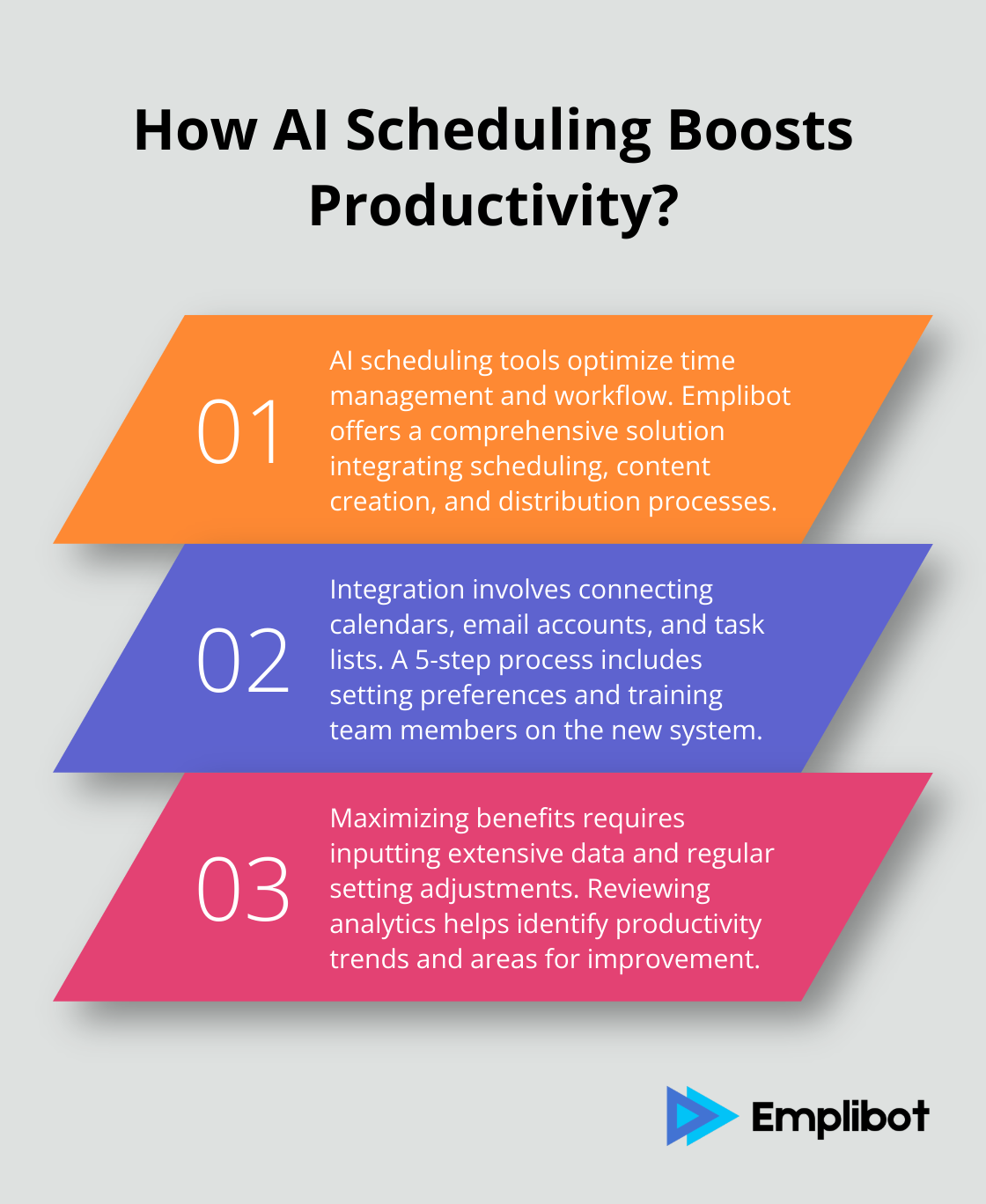
While options like Motion and SkedPal exist, Emplibot offers the most comprehensive solution. Emplibot not only handles scheduling but also integrates with content creation and distribution processes, providing a holistic approach to productivity.
Follow Integration Steps
Once you’ve chosen your AI scheduling tool, follow these steps to integrate it into your existing systems:
- Connect your calendars and email accounts to the AI scheduler.
- Import your task lists and project management tools.
- Set up your preferences (including work hours, meeting durations, and break times).
- Train team members on how to use the new system.
- Start with a pilot project to test the AI scheduler’s effectiveness.
Maximize AI Scheduling Benefits
To get the most out of your AI scheduling tool:
- Input as much data as possible. The more information you provide, the better the AI can optimize your schedule.
- Review and adjust your settings regularly. As your work patterns change, update your preferences accordingly.
- Use the AI’s analytics features to identify productivity trends and areas for improvement.
- Encourage team-wide adoption to streamline collaboration and project management.
Address Adoption Challenges
Implementing new technology often comes with challenges. Here are some common hurdles and how to address them:
- Resistance to change: Show the benefits through concrete examples and success stories.
- Learning curve: Provide comprehensive training and ongoing support for team members.
- Data privacy concerns: Choose a tool with robust security measures and clearly communicate data handling practices.
- Over-reliance on AI: Encourage a balance between AI suggestions and human judgment.
The goal of AI scheduling is to enhance your productivity, not to replace human decision-making entirely. Use it as a powerful tool to optimize your time and focus on high-value tasks.
Final Thoughts
AI scheduling has transformed time and task management. These tools offer unparalleled efficiency, accuracy, and adaptability in daily workflows through machine learning and predictive analytics. The benefits include increased productivity, reduced errors, improved work-life balance, and significant cost savings for businesses of all sizes.
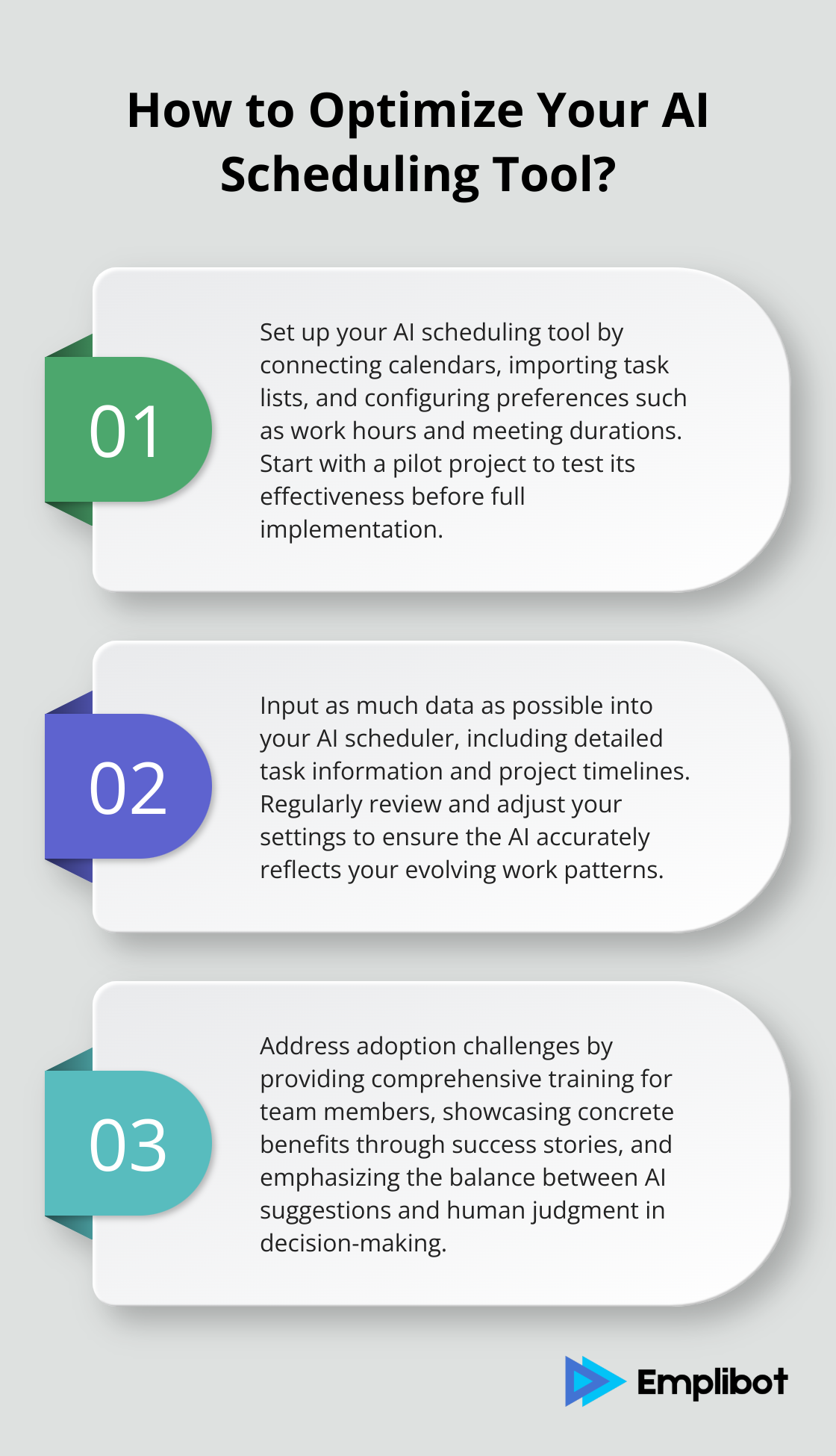
AI scheduling will become more sophisticated in the future. We expect deeper integration with other productivity tools, more advanced predictive capabilities, and greater personalization. These advancements will streamline work processes and help us make the most of our valuable time.
At Emplibot, we recognize the value AI scheduling brings to business processes. Our focus on automating content creation and distribution complements AI scheduling solutions. Try AI scheduling today and experience the transformation for yourself. Your future self will thank you for it.







![Will AI Kill Blogging? [What You Need To Do Today]](https://wp.emplibot.com/wp-content/uploads/emplibot/ai-kills-blogging-1751008068-768x456.jpeg)
